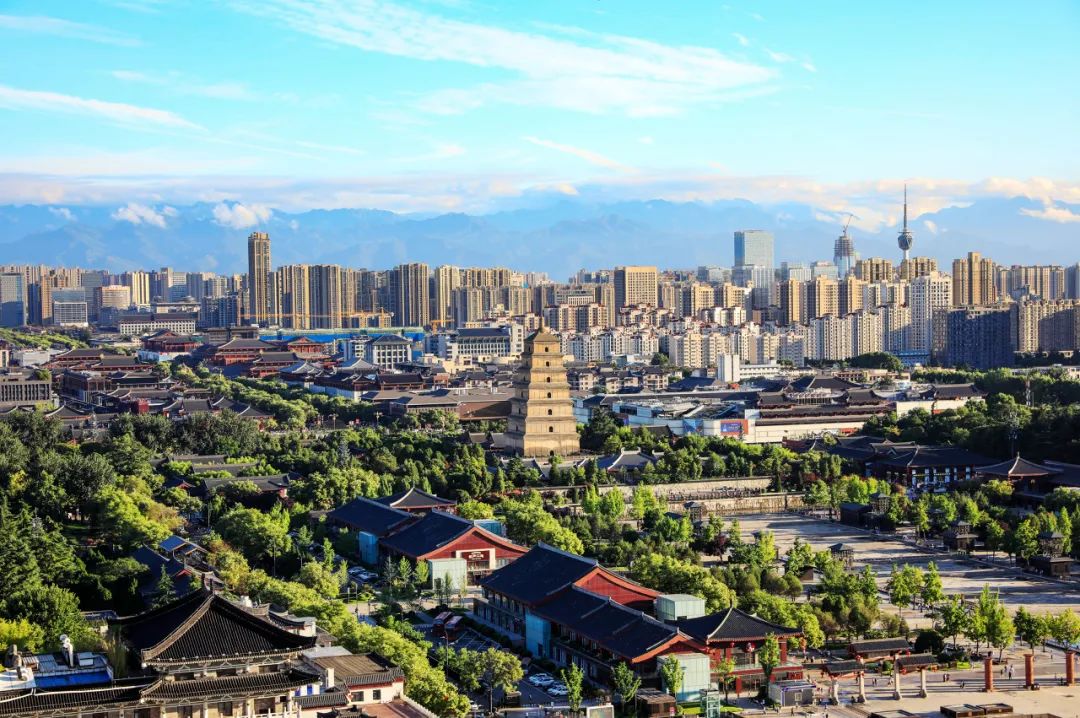Nestled in the heart of Shaanxi Province, Xi’an stands as a living testament to China’s millennia-old civilization. With a history spanning over 3,100 years and serving as the capital for 13 dynasties—including the Zhou, Qin, Han, and Tang—this city is a treasure trove of cultural heritage and modern innovation. Let’s explore its unique blend of ancient grandeur and contemporary vitality.
A City Built on History
Xi’an, once known as Chang’an (“Eternal Peace”), was the eastern terminus of the Silk Road and a global hub of trade, culture, and diplomacy. Its strategic location between the Qinling Mountains and the Weihe River made it a natural fortress and political center. The Ming Dynasty city wall, one of the world’s best-preserved ancient fortifications, still encircles the old town, offering panoramic views of the city’s seamless fusion of old and new.
The city’s historical significance is etched in landmarks like the Terracotta Army, dubbed the “Eighth Wonder of the World.” Discovered in 1974, these life-sized clay soldiers guard the tomb of Emperor Qin Shi Huang, symbolizing China’s imperial might. Meanwhile, the Big Wild Goose Pagoda, a 7th-century Buddhist relic, and the Bell and Drum Towers reflect Xi’an’s spiritual and architectural legacy.
Modern Urban Development
While steeped in history, Xi’an thrives as a modern metropolis. Designated a National Central City in 2018, it has evolved into a hub for education, technology, and transportation. Institutions like Xi’an Jiaotong University and Northwest Polytechnical University anchor its reputation as a research powerhouse.
The city’s infrastructure harmonizes tradition with innovation. The Xi’an City Wall now coexists with sprawling districts like Qujiang New Area, home to the dazzling Datang Everbright City. This 2,100-meter pedestrian street, illuminated by Tang Dynasty-inspired lights, hosts cultural performances, museums, and bustling night markets.
Must-Visit Attractions
- Terracotta Warriors Museum: Walk among thousands of intricately crafted statues, a silent army preserving Qin Dynasty glory.
- Ancient City Wall: Rent a bike to traverse this 14-kilometer Ming-era marvel, offering glimpses of Xi’an’s skyline.
- Muslim Quarter: Wander through aromatic alleys lined with food stalls and historic mosques like the Great Mosque.
- Huaqing Hot Springs: Soak in imperial baths once frequented by Tang emperors, nestled at the foot of Mount Li.
- Shaanxi History Museum: Discover over 370,000 artifacts, from Neolithic pottery to Tang goldware.
A Culinary Paradise
Xi’an’s cuisine is as rich as its history. Don’t miss:
- Roujiamo (Chinese Hamburger): Crispy flatbread stuffed with braised pork, a savory delight since the Tang Dynasty.
- Yangrou Paomo (Lamb Soup with Bread): Tear flatbread into bite-sized pieces, soaked in aromatic broth.
- Biangbiang Noodles: Thick, hand-pulled noodles drenched in chili oil and garlic.
- Liangpi (Cold Noodles): Refreshing rice noodles tossed with vinegar, chili, and cucumber.
For dessert, try Zenggao, a sticky rice cake layered with dates, or sip fresh pomegranate juice, a local specialty.
Conclusion
Xi’an is more than a historical relic—it’s a dynamic city where ancient pagodas shadow sleek skyscrapers, and where the echoes of Silk Road caravans blend with the hum of modern life. Whether you’re marveling at millennia-old artifacts, cycling atop ancient walls, or savoring street food under neon lights, Xi’an offers a journey through time and taste. As the saying goes: “In Xi’an, every brick tells a story.”
[Explore more about Xi’an’s wonders through its UNESCO sites, vibrant festivals, and hidden alleyways—where history is always within reach.]
References:
